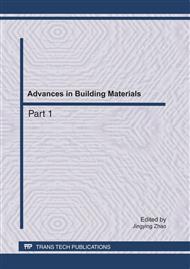p.551
p.555
p.561
p.566
p.571
p.576
p.581
p.586
p.591
Study on Material Parameters Effects on Smoldering and Transition from Smoldering to Flaming Combustion
Abstract:
The polyurethane foam is a most common fuel in smoldering fire. A small scale experimental compartment was built. The width, thickness and density of polyurethane foam material were changed several times in the experiments. Temperature histories measurement and analysis gaseous were used to explore the transition’s mechanism. The results show that with the width increased, the surface area and the air flow rate which access to the inside of material have also increased, and the quantity of oxygen is sufficient, heat release quantity by carbon oxidation is increased. When the width reaches a certain value, polyurethane foam material transformed easier from smoldering to flaming combustion. The polyurethane foam transforms to the flaming combustion not only depends on the length, width size but also relates to the thickness closely. When thickness reached a certain size, the temperature also reaches a whole jump. And the material transforms to the flaming combustion finally. The oxidation of larger density polyurethane foam material produces more heat, and then accumulates heat in the polyurethane foam center to reach the required temperature of gas phase reaction and ultimately transforms to flaming combustion from smoldering.
Info:
Periodical:
Pages:
571-575
Citation:
Online since:
May 2011
Authors:
Keywords:
Price:
Сopyright:
© 2011 Trans Tech Publications Ltd. All Rights Reserved
Share:
Citation:


